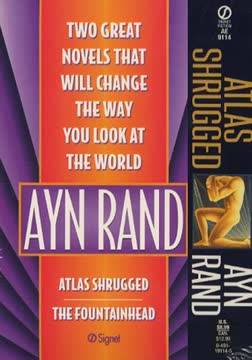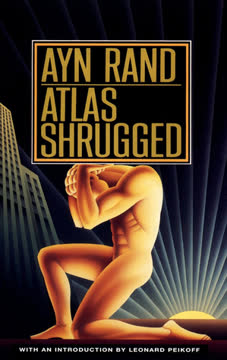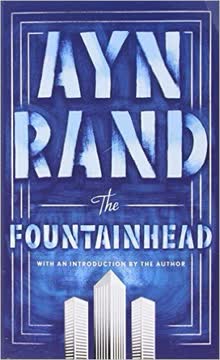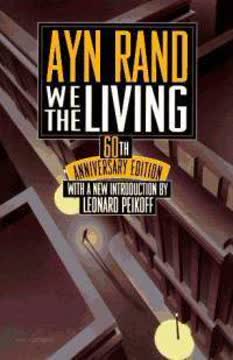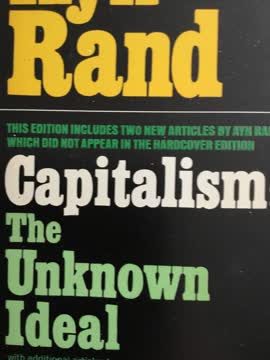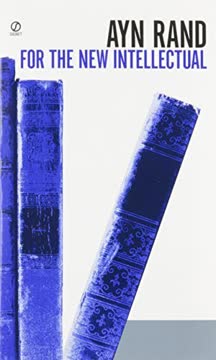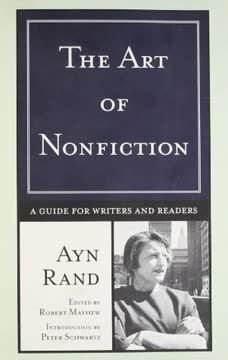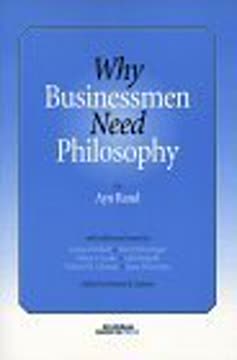Plot Summary
The Mysterious Question Unveiled
As Eddie Willers walks through New York, a vagrant asks, "Who is John Galt?" This question, simple yet profound, haunts Eddie, symbolizing the pervasive uncertainty and fear in a decaying world. The city mirrors this decline, with crumbling infrastructure and a sense of impending doom. Eddie, a loyal employee of Taggart Transcontinental, feels the weight of the railroad's struggles and the broader societal collapse. The question lingers, representing the search for meaning in a world hostile to individual achievement.
The Collapse of San Sebastian
The Mexican government nationalizes the San Sebastian Mines, only to find them worthless, shocking investors like James Taggart. Francisco d'Anconia, the enigmatic owner, seems unfazed, prompting speculation about his true motives. Dagny Taggart, James's sister, seeks to understand Francisco's intentions. The mines' collapse symbolizes the broader economic and moral decay, challenging assumptions about success and integrity.
The Burden of Rearden Steel
Hank Rearden, a successful industrialist, is burdened by societal and familial demands. Despite creating Rearden Metal, a symbol of innovation, he faces opposition from those fearing change. Rearden feels isolated, particularly from his wife, Lillian, who undermines his confidence. His struggle reflects the tension between personal values and societal expectations, as he navigates the complexities of his life and work.
The Party of Contradictions
At Lillian Rearden's party, societal contradictions are exposed. Intellectuals discuss cultural decline and sacrifice, while Rearden feels alienated. Dagny Taggart seeks respite from her responsibilities. The event highlights the disconnect between producers and consumers, and the moral bankruptcy of the elite. Rearden's interactions with Francisco d'Anconia underscore the tension between innovation and stagnation.
Francisco's Enigmatic Intentions
Francisco, once a symbol of success, now appears as a reckless playboy. However, his actions suggest a deeper purpose, challenging societal norms and questioning morality's foundations. Dagny confronts Francisco about the San Sebastian disaster, seeking answers. His cryptic responses hint at a larger plan, leaving Dagny and others questioning their assumptions about success and integrity.
The Struggle for Colorado
As the Rio Norte Line faces collapse, Dagny Taggart is determined to rebuild it using Rearden Metal. The line is crucial for Taggart Transcontinental and Colorado's industries. Despite opposition from her brother James and government challenges, Dagny is resolute. Her struggle represents the broader battle between innovation and mediocrity, and the fight to preserve individual achievement in a hostile world.
The Legend of Atlantis Revisited
Dagny Taggart hears a story about Atlantis, a mythical place of happiness and achievement, told by a woman at a party. Francisco d'Anconia cryptically suggests the story holds truth. This legend symbolizes the search for true achievement and happiness, resonating with Dagny's quest for meaning in a decaying world.
The Unraveling of Lillian Rearden
Hank Rearden's relationship with Lillian is explored, revealing manipulation and disdain. Lillian dismisses Hank's achievements, viewing their marriage as duty. Hank struggles with his desire for Dagny, a symbol of true achievement. This chapter delves into Rearden's psychological complexities and his conflict between duty and desire.
The Mystery of the Abandoned Factory
Dagny and Rearden find an abandoned factory with remnants of a revolutionary motor. The motor, designed to draw static electricity, symbolizes lost human innovation. The factory's history is mysterious, igniting Dagny's determination to find the inventor and unlock the motor's secrets, representing the quest for knowledge and progress.
The Unseen Hand of the Destroyer
As more industrialists vanish, Dagny suspects a mysterious figure, the "destroyer," orchestrates their disappearances. This unseen hand removes the country's most productive minds, leaving the economy in shambles. Dagny's quest to stop the destroyer becomes urgent, fearing for her railroad and the nation's future. The destroyer's motives remain unclear, but his impact is undeniable.
The Valley of the Mind
Pursuing John Galt, Dagny crashes her plane into a hidden valley, a sanctuary for the world's greatest minds. Here, she meets Galt and learns of a place where the mind is free to create without societal constraints. The valley represents a retreat from a world that punishes achievement, challenging Dagny's beliefs and offering a vision of true freedom.
The Oath of the Valley
John Galt reveals the valley's secret: a powerhouse running on his revolutionary motor. The door opens only to those reciting an oath to live for one's own sake. This oath is the valley's philosophical foundation, a commitment to individualism and self-reliance. Dagny faces a choice: join the strike of the mind or return to her world.
The Revelation of John Galt
Dagny learns John Galt is the motor's inventor and the strike's leader. He embodies the valley's ideals, dedicated to reason and individualism. Galt's presence is a testament to the mind's power and the potential for a world where individuals pursue happiness freely. His revelation challenges Dagny's values and offers a new perspective on achievement.
The Vanishing of Hank Rearden
Hank Rearden's disappearance sends shockwaves through the nation, symbolizing the collapse of the industrial backbone. His departure is a silent rebellion against the oppressive system. Factories shut down, and chaos erupts, reflecting society's moral decay. Dagny, though saddened, understands his need for liberation, contemplating her own entrapment.
The Voice of John Galt
John Galt's voice hijacks the airwaves, delivering a message that challenges society's core values. He declares a strike of the mind, withdrawing the world's greatest talents. Galt exposes the system's moral bankruptcy, calling for a new morality based on reason and individualism. His words resonate, igniting hope for a new beginning.
The Final Stand of Galt
Captured by the government, John Galt endures torture without surrendering, highlighting his commitment to his principles. His captors, desperate for his cooperation, fail to break his spirit. Galt's defiance underscores the futility of coercion and the power of the mind to resist oppression, symbolizing the collapse of the old order.
The Last Battle for Freedom
Francisco d'Anconia, Hank Rearden, and Ragnar Danneskjold rescue Galt, dismantling the torture machine. Their success represents individualism's triumph over brute force. The heroes' commitment to their values and willingness to fight for freedom underscore the novel's themes, paving the way for a new beginning based on reason and individualism.
The Triumph of the Mind
Galt and his allies envision a society where the mind is the ultimate source of wealth and progress. They reject sacrifice and embrace rational self-interest. The novel concludes with Galt tracing the dollar sign, symbolizing the mind's triumph and a future of reason and individualism. The characters' journey embodies the struggle for freedom and happiness, offering hope and renewal.
Characters
John Galt
John Galt is the central figure, representing the power of the mind and the refusal to compromise values. Captured by the government, he endures torture without surrendering, demonstrating unwavering commitment to his principles. Galt's vision for a rational society inspires his allies and serves as the foundation for a new beginning.
Dagny Taggart
Dagny Taggart is a key figure at Taggart Transcontinental, driven by progress and innovation. She is torn between her world and the valley's ideals, representing the battle between individual achievement and mediocrity. Her journey reflects the struggle to preserve values of reason and freedom amidst societal collapse.
Hank Rearden
Hank Rearden, creator of Rearden Metal, struggles with societal demands and personal isolation. His journey from isolation to solidarity with allies underscores his growth and transformation. Rearden's defiance against coercion and commitment to individualism highlight his role as a steadfast ally in the fight for freedom.
Francisco d'Anconia
Francisco d'Anconia, once a symbol of success, orchestrates financial disasters to expose societal corruption. His enigmatic actions suggest a deeper purpose, challenging norms and questioning morality. Francisco's leadership in Galt's rescue showcases his courage and dedication to freedom, highlighting his role as a driving force.
Ragnar Danneskjold
Ragnar Danneskjold defies the corrupt system by returning wealth to rightful owners. His actions challenge conventional justice, reflecting commitment to individual rights and freedom. Ragnar's role in Galt's rescue symbolizes redemption and renewal, embodying the novel's themes of hope and the power of the individual.
James Taggart
James Taggart, president of Taggart Transcontinental, is driven by fear and manipulation. His actions reflect societal decay, prioritizing self-interest over the common good. James's unraveling symbolizes the broader moral crisis, as he clings to power amidst the collapse of the old order.
Lillian Rearden
Lillian Rearden, Hank's wife, undermines his confidence and dismisses his achievements. Her actions highlight the disconnect between producers and consumers, and the moral bankruptcy of the elite. Lillian's manipulation and resentment reflect the broader societal decay and the prioritization of appearances over integrity.
Eddie Willers
Eddie Willers, a dedicated employee of Taggart Transcontinental, is haunted by the question, "Who is John Galt?" His loyalty to Dagny and commitment to the railroad reflect his desire for stability and progress in a world on the brink of collapse. Eddie's struggles symbolize the uncertainty and fear pervading society.
Dr. Robert Stadler
Dr. Robert Stadler, a prominent scientist, confronts the moral contradictions of the society he supported. Galt's message forces him to face the consequences of his values and the oppressive system he sustained. Stadler's internal conflict reflects the broader moral crisis, as he grapples with his role in the nation's downfall.
Ken Danagger
Ken Danagger, a successful coal magnate, decides to retire and leave his business. His departure is part of a pattern of industrialists vanishing, leaving the economy in jeopardy. Danagger's actions suggest a deeper understanding of the world, challenging Dagny's beliefs and highlighting the broader societal collapse.
Plot Devices
The Question "Who is John Galt?"
The recurring question symbolizes the uncertainty and fear gripping society. It represents the decline of innovation and progress, and the search for meaning in a world hostile to individual achievement. The question serves as a catalyst for introspection, challenging characters' assumptions about success and morality.
Rearden Metal
Rearden Metal, a revolutionary alloy, represents innovation in a world resistant to change. It is key in rebuilding the Rio Norte Line and preserving Colorado's prosperity. The metal symbolizes the battle between individual achievement and mediocrity, and the fight to uphold innovation and integrity.
The Valley
The valley is a hidden sanctuary where the world's greatest minds retreat to live free from societal constraints. It represents the potential for a new beginning and the promise of a future based on reason and individualism. The valley's inhabitants embody hope and renewal, challenging societal norms.
The Strike
The strike is a withdrawal of the world's greatest minds from a society that refuses to value them. By removing their talents, the strikers expose the futility of a system relying on coercion and sacrifice. The strike is a call to action, urging those oppressed by collectivist ideals to reclaim their lives and values.
The Broadcast
The broadcast reveals the truth about the nation's moral crisis, challenging core societal values. Galt's message exposes contradictions leading to the nation's downfall, serving as a catalyst for change. The broadcast forces society to confront its decay, paving the way for a new beginning based on reason and individualism.
The Torture Machine
The torture machine represents the government's attempt to break Galt's spirit and force compliance. Its failure underscores the futility of coercion and the power of the mind to resist oppression. The machine's destruction symbolizes the collapse of the old order and the triumph of individualism.
The Sign of the Dollar
The sign of the dollar, traced by Galt, represents the triumph of reason and the promise of a future based on individualism and free trade. It symbolizes hope and renewal, reflecting the characters' commitment to creating a better world. The sign serves as a reminder of the mind's power and potential for human achievement.
Analysis
"Atlas Shrugged & The Fountainhead" by Ayn Rand is a profound exploration of individualism, societal decay, and the power of the mind. Through its characters and plot, the novel critiques a society that punishes success and rewards mediocrity, highlighting the moral and intellectual bankruptcy of collectivist ideals. Rand's work champions reason, innovation, and the pursuit of personal happiness, challenging readers to reconsider their values and the systems they support. The novel's enduring themes of freedom, integrity, and the triumph of the individual resonate in today's world, offering a vision of hope and renewal amidst societal challenges.
Last updated:
FAQ
Synopsis & Basic Details
What is Atlas Shrugged about?
- A World in Decline: Atlas Shrugged depicts a dystopian United States where society is crumbling under increasing government control and collectivist policies, leading to widespread economic collapse and moral decay. The story follows Dagny Taggart, a railroad executive, as she struggles to keep her company, Taggart Transcontinental, operational amidst the mysterious disappearance of the nation's most productive and creative individuals.
- Quest for the Vanished: As industries fail and chaos spreads, Dagny embarks on a desperate quest to understand why the world's most capable minds are vanishing, encountering figures like Hank Rearden, an innovative industrialist, and Francisco d'Anconia, a once-celebrated copper magnate turned playboy. This search leads her to uncover a hidden philosophical movement and its enigmatic leader, John Galt.
- Clash of Ideologies: The novel is fundamentally a philosophical conflict between individualism and collectivism, portraying the devastating consequences when society attempts to shackle human achievement and prioritize "need" over ability. It explores themes of reason, self-interest, and the moral right of the individual to live for their own sake, culminating in a dramatic confrontation that challenges the very foundations of society.
Why should I read Atlas Shrugged?
- Provocative Philosophical Debate: Atlas Shrugged offers a powerful and uncompromising defense of individualism, capitalism, and rational self-interest, challenging readers to critically examine prevailing societal norms and moral assumptions. Its bold arguments and stark portrayal of societal collapse provide a unique perspective on the relationship between individual liberty and collective welfare.
- Engaging Narrative and Characters: Beyond its philosophical depth, the novel presents a compelling narrative with strong, complex characters who embody its core ideas. Readers are drawn into Dagny Taggart's relentless struggle, Hank Rearden's defiant integrity, and John Galt's enigmatic rebellion, making for a thought-provoking and emotionally resonant reading experience.
- Timeless Themes of Freedom: The book's exploration of government overreach, economic control, and the suppression of human potential remains highly relevant. It serves as a cautionary tale about the dangers of collectivism and a powerful affirmation of the human spirit's capacity for innovation, achievement, and the pursuit of personal happiness.
What is the background of Atlas Shrugged?
- Post-War American Context: Written in the 1950s, Atlas Shrugged reflects Ayn Rand's observations of growing government intervention in the economy and the rise of collectivist ideologies in the aftermath of the Great Depression and World War II. Rand, a Russian émigré, drew upon her experiences with Soviet communism to critique what she perceived as similar trends in American society.
- Objectivist Philosophy's Zenith: The novel serves as the culmination of Ayn Rand's Objectivist philosophy, presenting its core tenets—reason as man's only absolute, purpose as his chosen goal, and self-esteem as his inviolate certainty—through a fictional narrative. It is her most comprehensive fictional exposition of her philosophical system.
- Critique of Altruism and Statism: Rand explicitly critiques altruism (the moral code that demands self-sacrifice for others) and statism (the concentration of power in the state), arguing that these ideologies lead to the destruction of individual creativity and societal prosperity. The book's setting, a decaying industrial America, is a direct consequence of these philosophical principles.
What are the most memorable quotes in Atlas Shrugged?
- "Who is John Galt?": This iconic opening line, initially a colloquial expression of futility, evolves throughout the novel to become a symbol of the vanishing productive class and, ultimately, the identity of the strike's leader. It encapsulates the pervasive sense of unanswered questions and the search for meaning in a collapsing world.
- "I swear—by my life and my love of it—that I will never live for the sake of another man, nor ask another man to live for mine.": This is John Galt's Oath, the central moral tenet of the strikers' philosophy. It is a radical declaration of individualism and self-ownership, directly opposing the altruist creed of self-sacrifice that Rand critiques.
- "The road is cleared. We are going back to the world.": These are John Galt's final words in the novel, spoken as he traces the sign of the dollar in the sky. They signify the end of the strike, the triumph of the men of the mind, and the promise of a new beginning for a world rebuilt on principles of reason, individualism, and productive achievement.
What writing style, narrative choices, and literary techniques does Ayn Rand use in Atlas Shrugged?
- Didactic and Expository Prose: Rand employs a distinctive, often didactic style, using her characters and plot to explicitly convey her philosophical ideas. Long monologues, particularly John Galt's climactic speech, serve as direct expositions of Objectivism, making the novel a vehicle for philosophical instruction as much as a work of fiction.
- Heroic Realism and Romanticism: Her narrative blends elements of realism, depicting a decaying industrial society with meticulous detail, with a strong undercurrent of Romanticism. Characters are often larger-than-life, embodying specific virtues or vices, and the plot is driven by grand conflicts and dramatic confrontations, emphasizing the heroic potential of humanity.
- Symbolism and Motif Repetition: Rand extensively uses symbolism (e.g., Rearden Metal, the sign of the dollar, the John Galt Line, the Taggart Building as a living entity) and recurring motifs (e.g., the calendar, the question "Who is John Galt?", the vanishing men). These elements reinforce the novel's themes, providing layers of meaning and contributing to its distinctive, almost mythic, atmosphere.
Hidden Details & Subtle Connections
What are some minor details that add significant meaning in Atlas Shrugged?
- Eddie Willers' Oak Tree: The childhood memory of the great oak tree, initially perceived as an unshakeable symbol of strength, later found to be hollow and rotted within, subtly foreshadows the internal decay of Taggart Transcontinental and the broader society. This detail highlights that outward appearances of strength can mask inner corruption and vulnerability, a core theme of societal decline.
- The Calendar's Unseen Hand: The giant calendar on a New York skyscraper, initially a mundane detail, becomes a silent, ominous countdown. Its unmoving date, "September 2," and Eddie's inexplicable discomfort with it, subtly hint at a predetermined, inescapable fate for the world, and later, the specific date of d'Anconia Copper's nationalization, revealing a hidden, controlling force behind seemingly random events.
- The "Wet Nurse" Nickname: The nickname given to the Deputy Director of Distribution, initially a casual insult, subtly reveals the true nature of the collectivist system. It implies that the government's role is not to foster growth or production, but to "nurse" the unproductive, draining resources from the capable, a parasitic relationship that the system attempts to disguise.
What are some subtle foreshadowing and callbacks in Atlas Shrugged?
- Halley's Fifth Concerto: The brakeman whistling a "Fifth Concerto" by Richard Halley, a piece Halley supposedly never wrote, subtly foreshadows the existence of a hidden world of creators (the valley) where Halley continues to compose. This early detail hints at a reality beyond the decaying public sphere, where true artistic and productive genius still thrives in secret.
- Francisco's "Climax of the d'Anconias": Francisco's childhood ambition to be the "climax of the d'Anconias" and his father's expectation that he would surpass all ancestors, subtly foreshadow his ultimate act of destroying the d'Anconia fortune. This is not a failure but a perverse fulfillment of his family's legacy, as he destroys it to prevent its exploitation by looters, a radical act of integrity.
- Rearden's "Sanction of the Victim": Francisco's early warning to Rearden about the "sanction of the victim" subtly foreshadows Rearden's eventual realization of his own complicity in his torment. This concept, initially abstract, becomes a concrete understanding of how the productive enable their own destruction by accepting undeserved guilt and validating their oppressors.
What are some unexpected character connections in Atlas Shrugged?
- Galt's Hidden Identity as a Track Laborer: The seemingly insignificant track laborer Eddie Willers confides in turns out to be John Galt himself. This unexpected connection highlights Galt's deep understanding of the industrial world and his commitment to observing its decline firsthand, while also emphasizing the "hidden" nature of the strike's participants.
- Dr. Akston as Galt's Teacher: The revelation that Hugh Akston, the respected philosopher, is John Galt's former teacher, and that Galt was one of his three "sons" (along with Francisco and Ragnar), establishes a profound intellectual lineage for the strike's leader. This connection underscores the philosophical depth of Galt's movement, rooting it in a tradition of reason.
- Lillian Rearden's Role as Informer: The shocking revelation that Lillian Rearden was the anonymous informer who provided Dr. Ferris with the evidence to blackmail Hank Rearden is a crucial, unexpected connection. It exposes the depth of her malice and resentment, revealing her as a conscious agent of destruction, driven by a desire to punish Hank for his virtues.
Who are the most significant supporting characters in Atlas Shrugged?
- Hugh Akston: As John Galt's former philosophy professor and a resident of the valley, Akston serves as the intellectual patriarch of the strike. He provides the philosophical framework for Galt's actions, explaining the Objectivist principles of reason, identity, and the "morality of life" that underpin the strike.
- Midas Mulligan: The reclusive, gold-standard banker in the valley, Mulligan represents financial integrity and the proper use of wealth. His disappearance from the outside world and his role in establishing the valley's economy underscore the novel's economic themes and the idea that true wealth is earned and protected by rational individuals.
- Owen Kellogg: Initially a promising young Taggart employee who mysteriously quits, Owen Kellogg later reappears as a resident of the valley. His early departure and later presence in the valley exemplify the "brain drain" from the outside world and serve as a tangible example of the strike's impact.
Psychological, Emotional, & Relational Analysis
What are some unspoken motivations of the characters in Atlas Shrugged?
- James Taggart's Lust for Destruction: Beyond his stated desire for power or popularity, James Taggart's deepest, unspoken motivation is a subconscious lust for destruction, particularly of that which is great or successful. His actions, such as sabotaging the Rio Norte Line or celebrating the San Sebastian disaster, are driven by an unacknowledged envy and resentment of competence, which he masks with platitudes about "public welfare."
- Lillian Rearden's Vengeful Insecurity: Lillian's constant undermining of Hank Rearden stems from a profound, unspoken insecurity and a desire for revenge. She resents his self-sufficiency and integrity, which expose her own emptiness. Her actions are motivated by a need to drag him down to her level, to prove that his virtues are a facade, and to validate her own chosen path of mediocrity and manipulation.
- Dr. Robert Stadler's Fear of Irrelevance: Dr. Stadler's complicity with the looters, despite his scientific genius, is driven by an unspoken fear of irrelevance and a desperate clinging to public recognition. He sacrifices his intellectual integrity not for material gain, but for the "sanction" of society, fearing that without it, his mind and achievements would cease to matter in a world that no longer values truth.
What psychological complexities do the characters exhibit in Atlas Shrugged?
- Hank Rearden's Self-Damnation: Rearden exhibits a complex psychological struggle rooted in his acceptance of an undeserved guilt. He internalizes the societal condemnation of his virtues (e.g., his pride in his work, his desire for Dagny), leading to self-torture and a belief that his happiness is immoral. This internal conflict, the "sanction of the victim," is a central psychological battle he must overcome.
- Cherryl Taggart's Quest for Meaning: Cherryl Brooks (later Taggart) displays a poignant psychological complexity in her desperate search for meaning and value in a decaying world. Her initial admiration for Jim Taggart, based on a misperception of his strength, and her later horrified realization of his true nature, highlight the psychological toll of living in a society that inverts values and rewards pretense.
- Francisco d'Anconia's Mask of Depravity: Francisco's public persona as a worthless playboy is a meticulously crafted psychological mask designed to conceal his true purpose. His "depravity" is a calculated act of defiance, a form of psychological warfare against the looters. The internal cost of maintaining this facade, particularly his emotional distance from Dagny, reveals the profound complexity of his commitment to the strike.
What are the major emotional turning points in Atlas Shrugged?
- Dagny's "No" to the Board: Dagny's defiant "No" to the Board of Directors regarding the San Sebastian Line and her decision to build the John Galt Line herself marks a major emotional turning point. It signifies her refusal to compromise her values and her commitment to independent action, shifting from a position of internal struggle to open rebellion.
- Rearden's Trial and Revelation: Hank Rearden's trial, where he refuses to defend himself on the looters' terms and instead delivers a powerful speech affirming his self-interest and productive values, is a pivotal emotional turning point. It marks his rejection of the "sanction of the victim" and his embrace of his own moral rectitude, leading to a profound sense of liberation.
- Galt's Broadcast and Dagny's Choice: John Galt's radio speech, revealing the strike and its philosophical underpinnings, serves as a monumental emotional turning point for Dagny. It forces her to confront the true nature of the conflict and make a definitive choice between the dying outside world and the values of the valley, culminating in her decision to join the strike.
How do relationship dynamics evolve in Atlas Shrugged?
- Dagny and Rearden: From Professional Respect to Romantic Alliance: Their relationship evolves from one of mutual professional respect and shared productive values to a deep romantic and intellectual bond. Initially, their connection is forged in their shared struggle to keep the railroad and steel industries alive. This evolves into a passionate affair, symbolizing the union of mind and body, and culminates in their partnership in the strike, where their love becomes a source of strength and clarity.
- Francisco and Dagny: From Childhood Love to Philosophical Adversaries (and back): Their relationship transforms from a childhood bond of shared ambition and admiration into a complex dynamic of philosophical opposition, with Francisco seemingly embracing depravity. However, this is revealed to be a calculated act, and their underlying love and shared values are ultimately reaffirmed, culminating in a reunion based on mutual understanding and respect for their individual paths.
- Jim Taggart and Cherryl Brooks: A Marriage of Contradictions: Their marriage is a study in perverse relationship dynamics. Jim marries Cherryl not for love or shared values, but because her naive admiration feeds his insecurity and allows him to project a false image of greatness. Cherryl, in turn, seeks a hero but finds a void, leading to her tragic disillusionment. Their relationship highlights the destructive nature of unearned admiration and the psychological cost of living a lie.
Interpretation & Debate
Which parts of the story remain ambiguous or open-ended in Atlas Shrugged?
- The "Destroyer's" Initial Identity: While John Galt is ultimately revealed as the "destroyer" (of the old world), the initial ambiguity surrounding this figure's identity and motives creates suspense and allows readers to project their own fears and suspicions onto the vanishing industrialists. The novel deliberately withholds this information to build tension and emphasize the pervasive sense of an unseen, malevolent force.
- The Fate of the Outside World: While the valley offers a clear alternative, the ultimate fate of the outside world after the strike is left somewhat open-ended. The novel concludes with the lights of New York going out and the world collapsing, but the full extent of its destruction and the timeline for its potential rebuilding are not explicitly detailed, leaving room for interpretation regarding the severity and permanence of the collapse.
- The Nature of the Torture Machine: The torture machine used on Galt, the "Ferris Persuader," is described in terms of its effects (pain, heart rate changes) but its exact scientific mechanism remains ambiguous. This ambiguity serves to heighten its terror, portraying it as a tool of irrational force that defies scientific understanding, rather than a mere technological device.
What are some debatable, controversial scenes or moments in Atlas Shrugged?
- Lillian Rearden's "Confession" of Adultery: Lillian's public declaration of her infidelity with James Taggart to Hank Rearden is highly controversial. While intended by Lillian as a final, devastating blow to Hank's self-esteem and a means of blackmail, its impact is inverted. Hank's reaction, a profound sense of liberation and clarity, challenges conventional notions of marital betrayal and forgiveness, sparking debate about the nature of love, honor, and personal values.
- Dagny Taggart's Radio Broadcast: Dagny's decision to publicly expose her affair with Hank Rearden during her radio broadcast, and to frame it as a "proud" act, is a contentious moment. It defies societal norms of female modesty and privacy, forcing a confrontation with the public's moral hypocrisy. This scene sparks debate about the role of personal life in public discourse and the radical nature of Rand's concept of sexual morality.
- The Torture Machine Scene: The detailed depiction of John Galt's torture by the Ferris Persuader is one of the most debated scenes. Critics argue it is gratuitous or melod
Review Summary
Atlas Shrugged and The Fountainhead receive polarized reviews. Some readers find them life-changing, praising Rand's philosophical ideas and compelling storytelling. They appreciate the focus on individualism, integrity, and rational self-interest. Others criticize the books as tedious, unrealistic, and promoting selfish ideologies. Many note the characters are one-dimensional and the writing can be preachy. While some view the novels as inspirational, others see them as dangerous and flawed. The length and density of the books are frequently mentioned as challenging aspects.
Similar Books
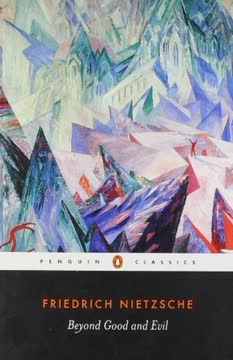


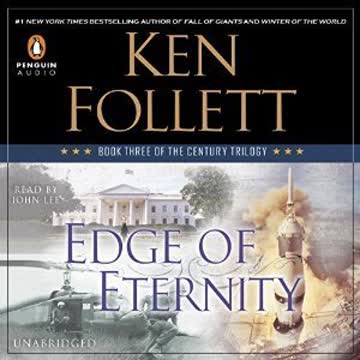
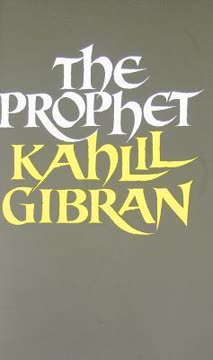
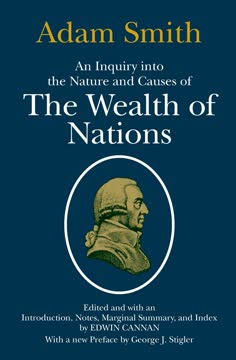
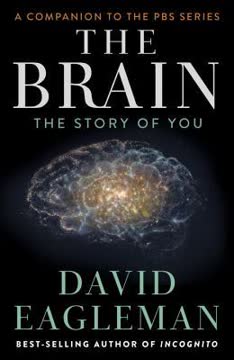

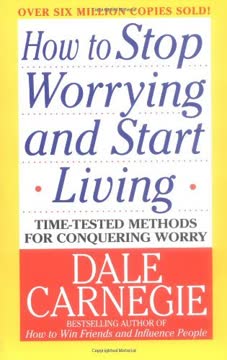

Download PDF
Download EPUB
.epub digital book format is ideal for reading ebooks on phones, tablets, and e-readers.
